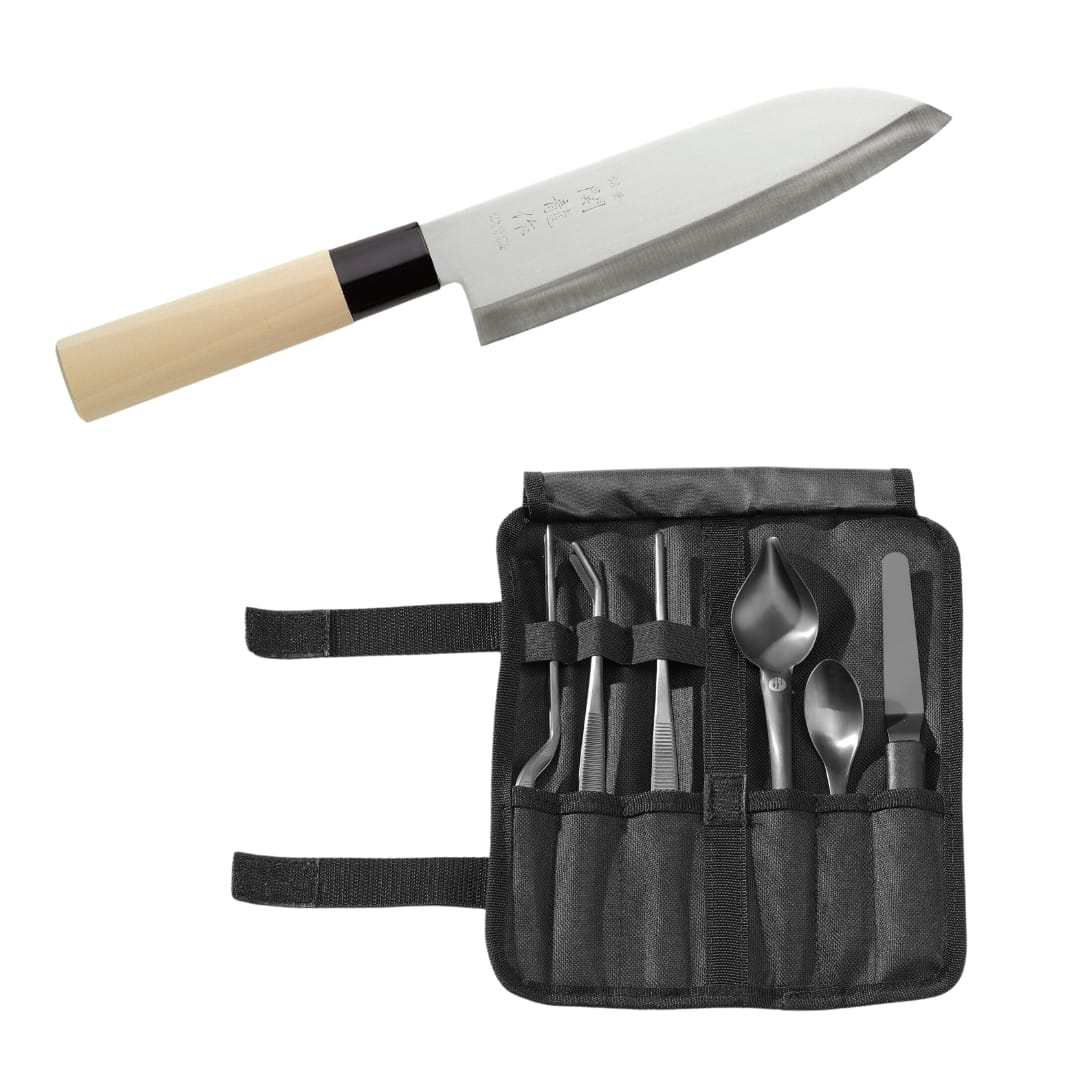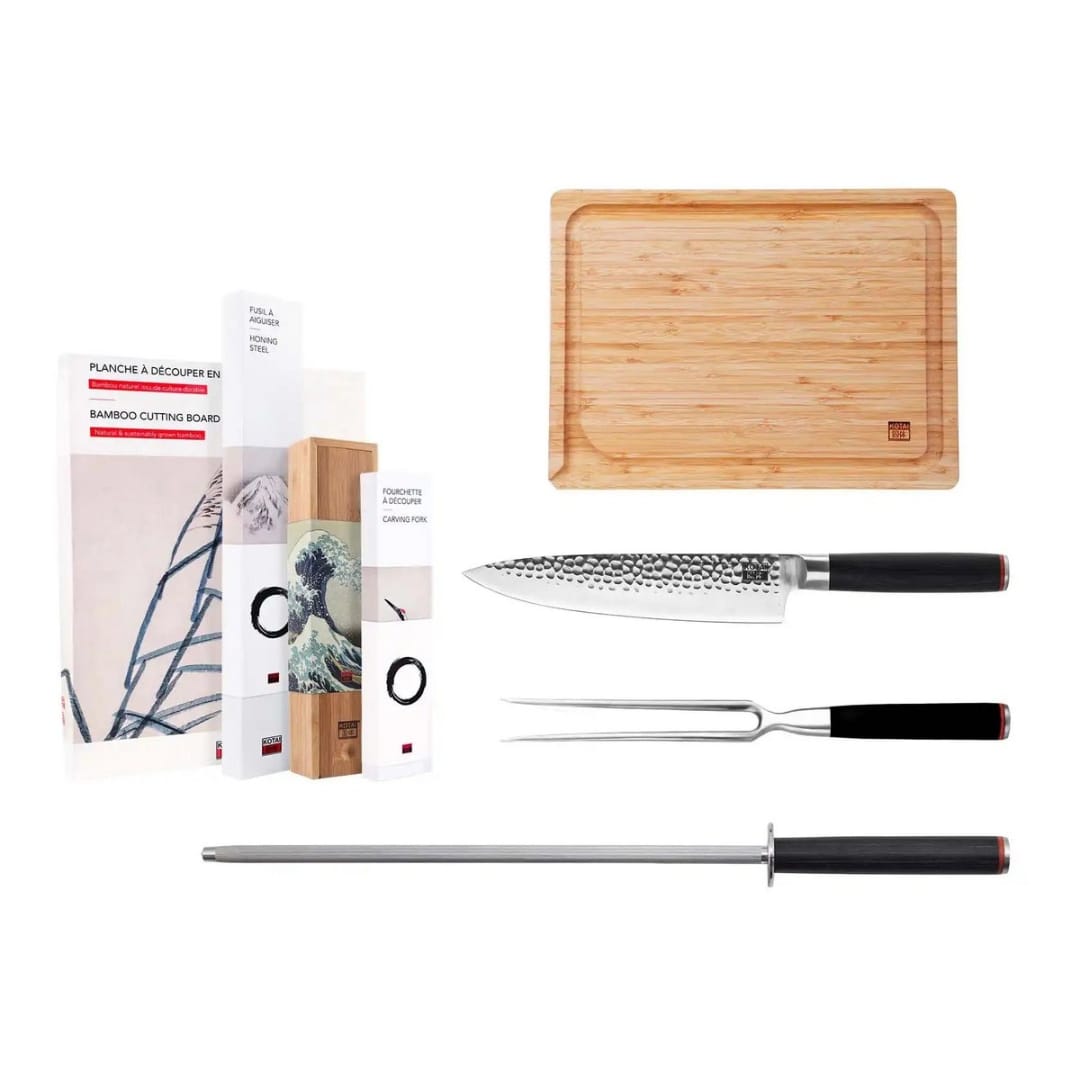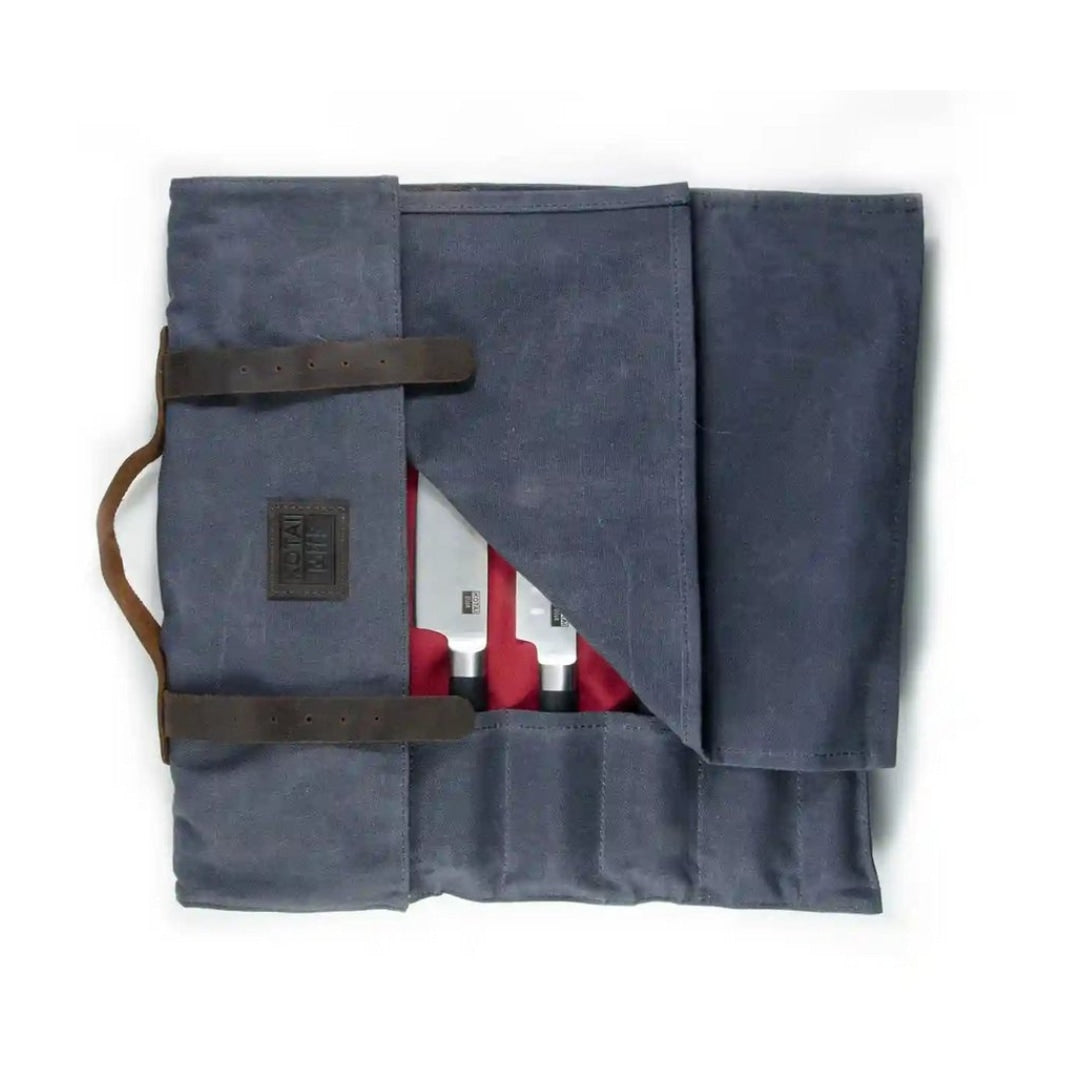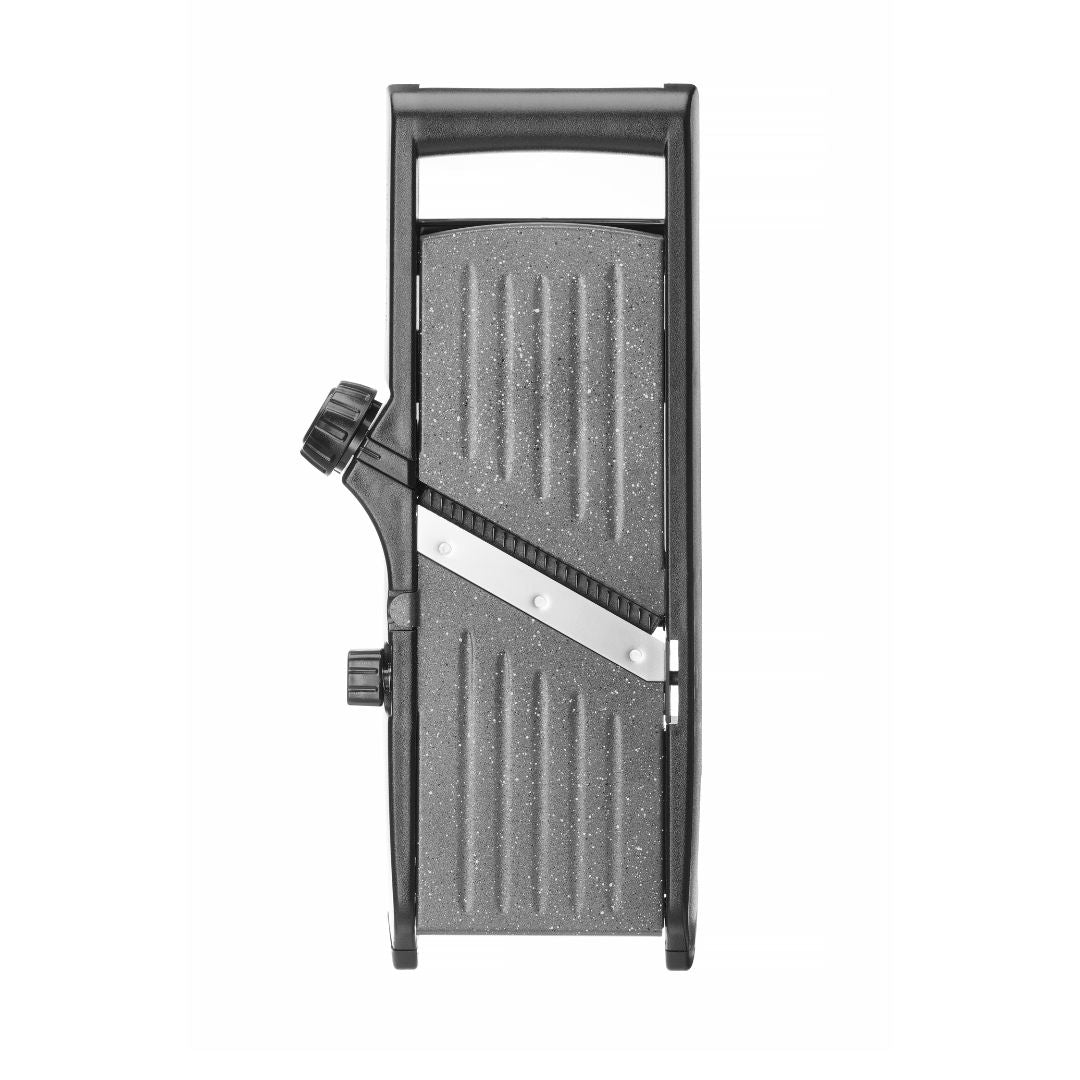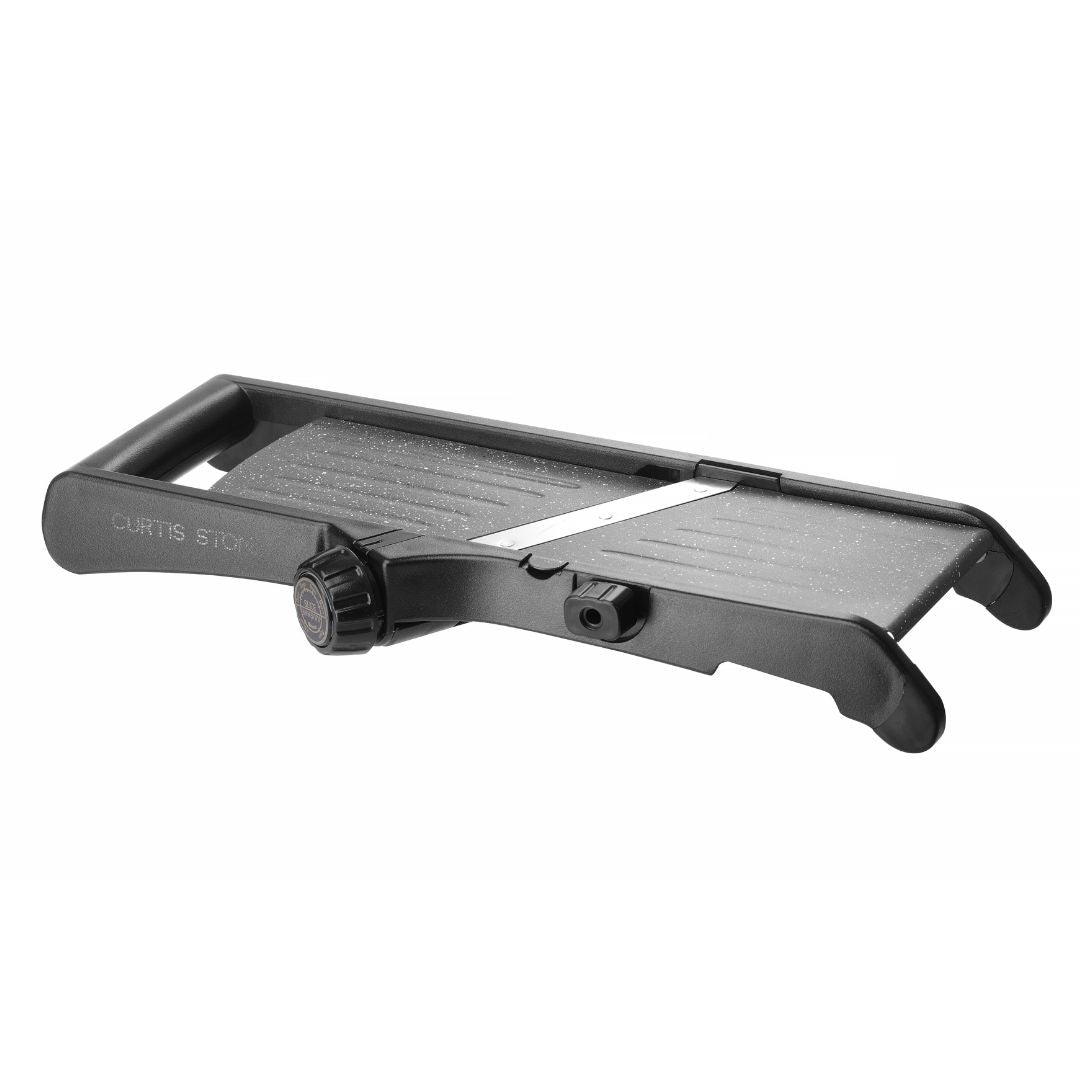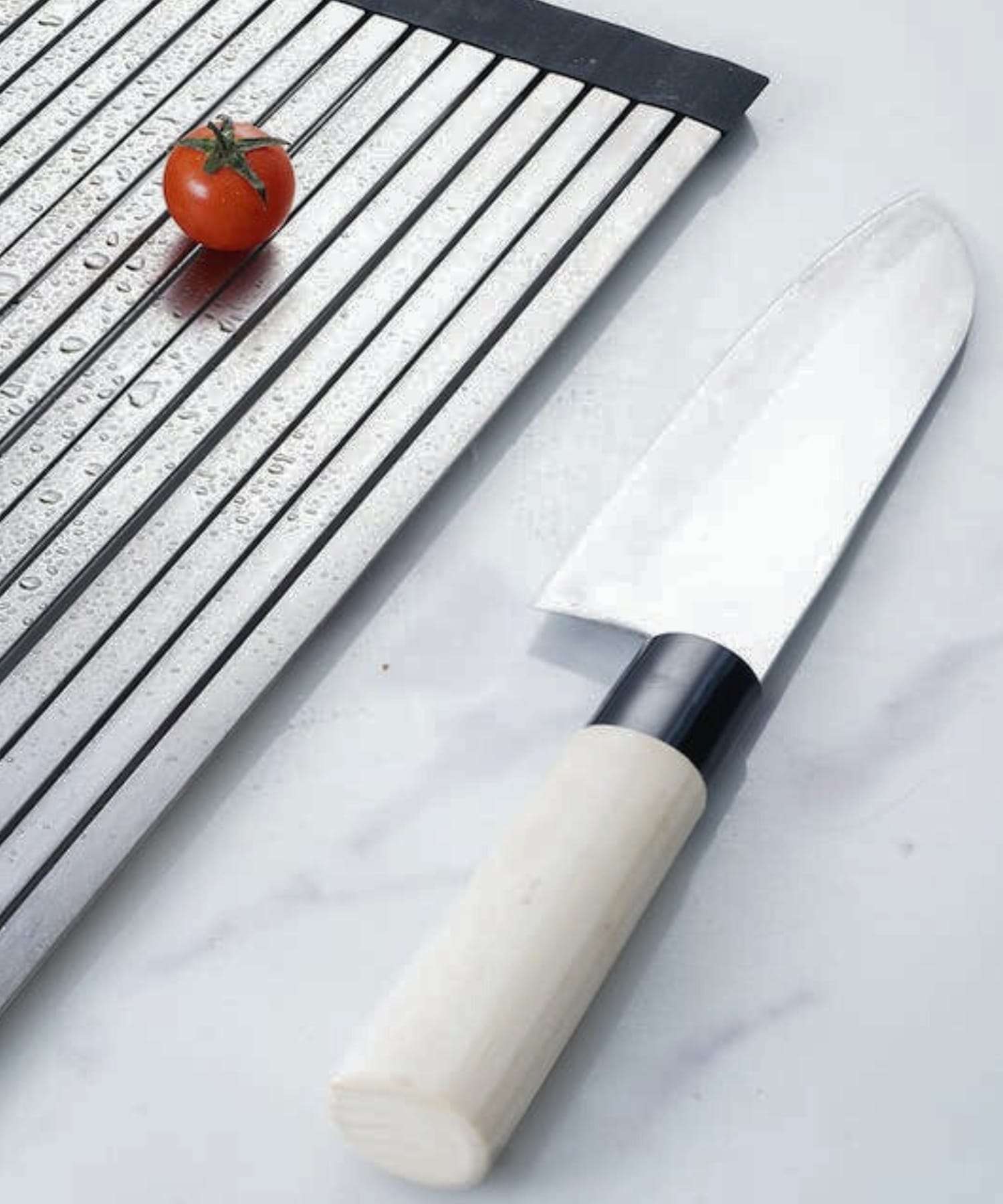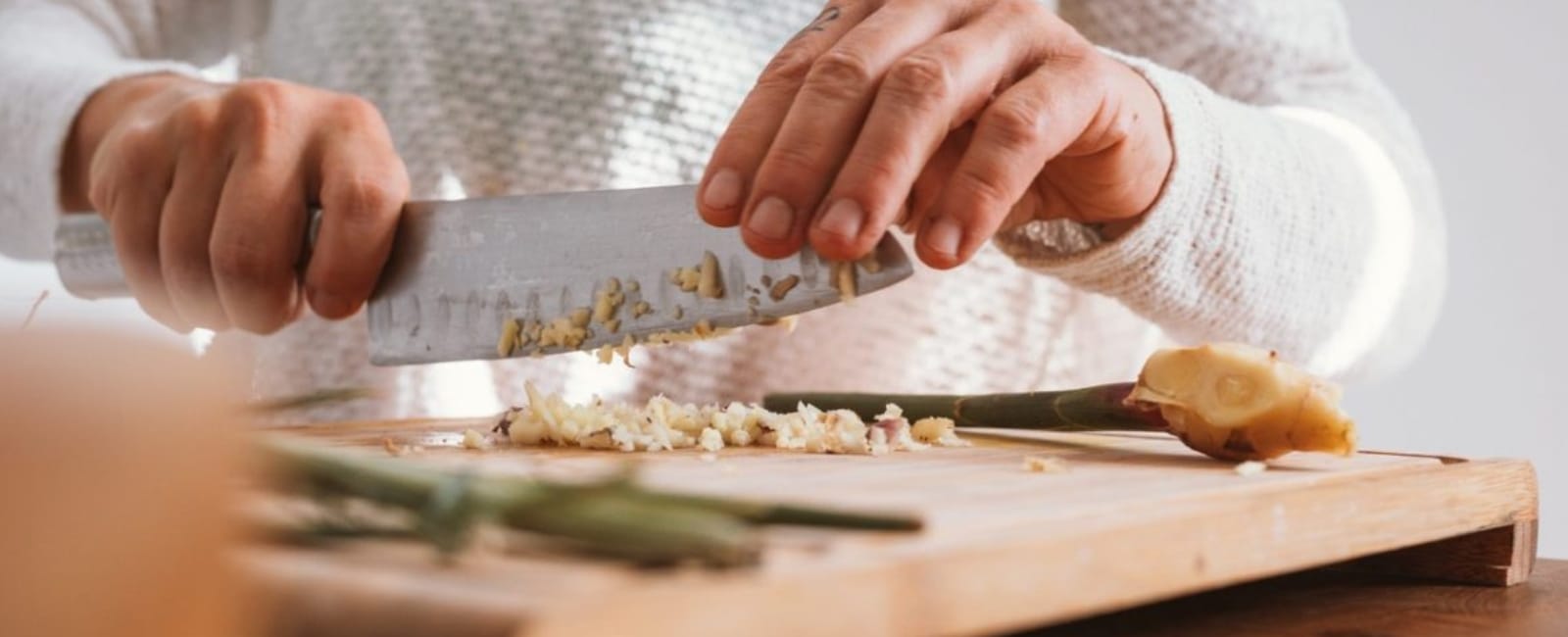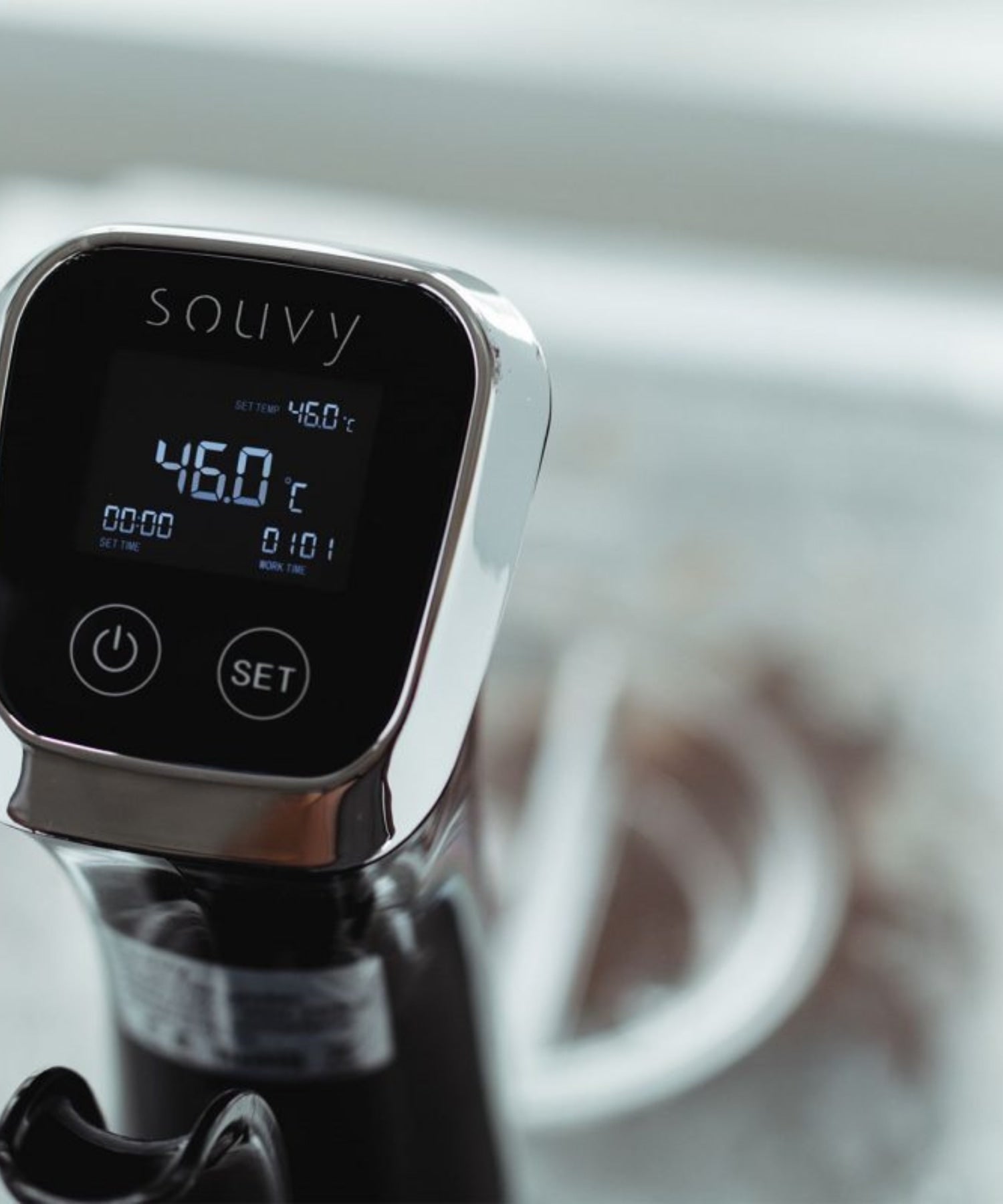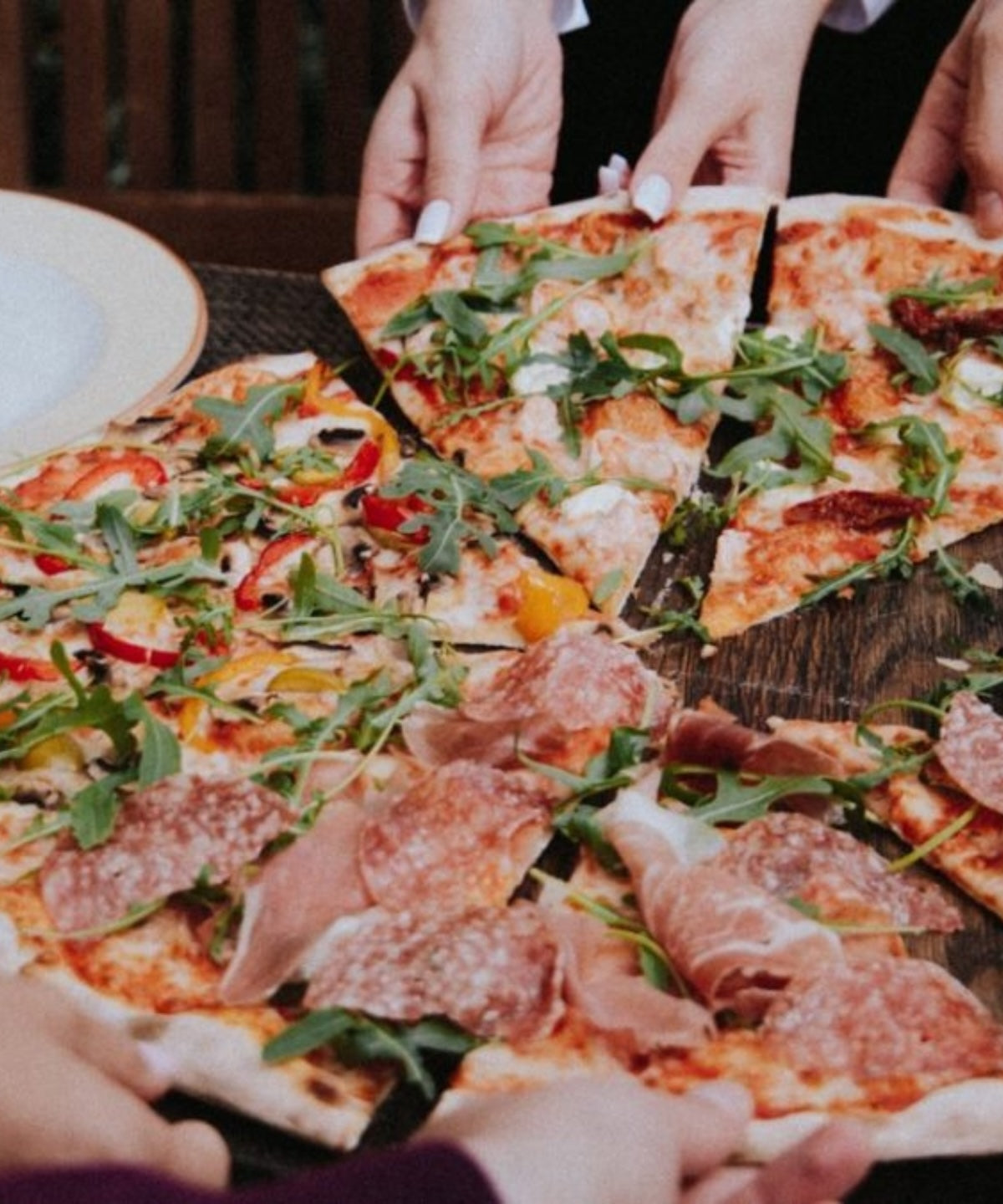With a good knife you not only cut easier, but also safer!
These are the advantages of high-quality knives
High-quality knives are an investment in any kitchen and can greatly enhance the cooking experience. Below we explore why it is worth choosing quality when buying new knives for your kitchen.
Precision when cutting
A sharp, well-balanced blade provides unparalleled cutting precision. This not only makes it easier to chop ingredients, but also helps maintain the texture and integrity of the food, which is essential for presentation and taste.
Comfort and safety
Good knives are designed with ergonomics in mind, meaning they fit comfortably in the hand, even during extended use. This reduces the risk of fatigue and injuries. A good handle and a balanced weight provide more control while cutting, which increases safety in the kitchen.
Lasts a long time
Quality knives are made from high-quality materials such as high-quality stainless steel, which stay sharp longer and are resistant to rust and stains. While they may require a larger initial investment, these blades last longer, meaning you won't need to replace them as often.
Versatility
From slicing bread to filleting fish, quality knives can handle a wide range of culinary tasks. Souvy offers specialized knives for different purposes, meaning you always have the right tool for every task in the kitchen.
A sharp, well-balanced blade provides unparalleled cutting precision. This not only makes it easier to chop ingredients, but also helps maintain the texture and integrity of the food, which is essential for presentation and taste.
Good knives are designed with ergonomics in mind, meaning they fit comfortably in the hand, even during extended use. This reduces the risk of fatigue and injuries. A good handle and a balanced weight provide more control while cutting, which increases safety in the kitchen.
Quality knives are made from high-quality materials such as high-quality stainless steel, which stay sharp longer and are resistant to rust and stains. While they may require a larger initial investment, these blades last longer, meaning you won't need to replace them as often.
From slicing bread to filleting fish, quality knives can handle a wide range of culinary tasks. Souvy offers specialized knives for different purposes, meaning you always have the right tool for every task in the kitchen.
Different types of knives
At Souvy we understand that every home cook has unique needs. That's why we offer an extensive selection of knives specifically designed to suit different cooking styles and preferences. Here is an overview of our range.

Chef knives
The chef's knife is indispensable in every kitchen. With a perfect shape and a sharp, durable edge, our chef knives are perfect for slicing, chopping and dicing all types of ingredients.

Santoku knives
Ideal for those who prefer a knife with a wider blade, our Santoku knives offer excellent control and precision. They are perfect for cutting meat, fish and vegetables, with a design that minimizes food sticking to the blade.
Bread knives
Our bread knives with their serrated edge effortlessly cut through hard bread crusts without crushing the soft interior. An essential tool for both soft bread and crispy baguettes.

Filleting knives
For fish lovers, fillet knives offer a flexible blade that is ideal for precise filleting and preparation of fish dishes. These blades provide clean cuts without damaging the delicate texture of the fish.
Unique properties
Each of our knives is crafted with the highest quality materials and techniques to ensure durability, balance and ease of use. They are incredibly functional, with handles that fit comfortably in the hand and a design that enriches any kitchen.

Maintenance tips for knives
To clean
Wash your knives by hand in warm water and mild detergent immediately after use. Dry them with a soft cloth to prevent stains and rust. Avoid using the dishwasher as this can damage the blade.
Sharpen
Keep your knives sharp by sharpening them regularly. Use a sharpening stone or sharpening rod to restore the edge of the blade. As a rule of thumb, sharpen your knives every few months or more often, depending on how often you use them.
Storage
Store your knives in a safe place, such as a knife block or on a magnetic knife strip. This prevents damage to the blades and keeps them safely and conveniently within reach.
Wash your knives by hand in warm water and mild detergent immediately after use. Dry them with a soft cloth to prevent stains and rust. Avoid using the dishwasher as this can damage the blade.
Keep your knives sharp by sharpening them regularly. Use a sharpening stone or sharpening rod to restore the edge of the blade. As a rule of thumb, sharpen your knives every few months or more often, depending on how often you use them.
Store your knives in a safe place, such as a knife block or on a magnetic knife strip. This prevents damage to the blades and keeps them safely and conveniently within reach.
Frequently asked questions about knives
Do you have questions about ordering knives? View our frequently asked questions here or contact us!
How do I maintain my chef's knife?
Maintaining a chef's knife is important to maintain its lifespan and performance. It is recommended to wash and dry the knife by hand after use. The knife must also be sharpened regularly with a sharpening stone or grinding machine. It is also important to store the knife in a safe manner, such as in a knife block or honeycomb.
How often should I sharpen my chef's knife to maintain best performance?
It depends on the frequency with which you use the knife and how sharp you want to keep it. If you use the knife often, you may need to sharpen it once a month. If you use it less often, sharpening every 2-3 months may be sufficient.
Can I clean my chef's knife in the dishwasher?
It is not recommended to clean your chef's knife in the dishwasher, because the blade can become damaged or dull if it comes into contact with other objects in the dishwasher. It is best to wash the knife by hand with warm water and dishwashing liquid.
What is the best way to get a grip on my chef's knife while cutting?
There are different ways to get a grip on a chef's knife, such as using a chef's grip or a pinch grip. The most important thing is to choose a grip that is comfortable for you and keeps your fingers safe while cutting.
What is the correct way to hold and move a chef's knife while cutting?
There are different ways to hold and move a chef's knife while cutting, such as the “rock chop” motion or the “push cut” motion. The most important thing is to choose a technique that is safe and efficient for you and the task you are performing. It is advisable to consult a professional chef or culinary school for additional instructions and training.
What are the most popular knives for hobby chefs?
- Chef's knife (or santoku knife): This is a general purpose knife used for a variety of cutting tasks, such as slicing vegetables, fruits and meat. It is one of the most versatile knives in the kitchen and is therefore a popular choice among hobby chefs.
- Paring Knife: This is a small knife used for precision cutting tasks such as peeling fruits and vegetables. This knife is useful for smaller tasks and is a commonly used knife among hobby chefs.
- Bread Knife: This knife has a sharp, ribbed blade that is used to cut bread without crushing it.


